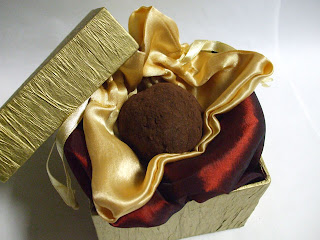Happiness Puzzle
Being happy is a state of being most everyone wants to experience, though not everyone is skilled at reaching and prolonging this sometimes elusive state. There are a range of ways to experience feelings of happiness, with certain methods working better for some than others.
This series will starts with #1: Sensory Hedonism, and then will follow with the following techniques you can employ to experience and prolong the feeling of happiness:
- Sensory Hedonism
- Achievable Challenges
- Serving Others
- Expertise
- Fake it till ya make it
- Stay busy
- Aligned Integrity
- Rose Colored Glasses
- Live quietly
- Bringing Things Into Existence (Create)
- Gratitude
- Take up a Hobby
- Discover your Deity
- Get Healthy
- Forgive & Forget
- Hugs
- Conquer Boredom
- Learn New Stuff
- Good Hair Days
- Mood Matching: Match action to your chosen mood
- Make Connections
- Positive Nostalgia
- Positive Reversal
- Positive Writing Techniques
- Purge Unhappiness
- Random Kindness (Pay it Forward)
- Reframe Desires
- Positive Reminders
- Retail Therapy: Go Shopping!
- Self-sufficiency
- Social Networking
- Select Happiness: Do More of What Makes You Happy
- Accept People as They Are
- Get a Pet
- Take a Break
- Master the Basics
- Love Unconditionally
- Try Something New
- Play!
- [Fill in the Blank]
#1: Sensory Hedonism
Motivational hedonism is the claim that we are only motivated by pleasure or pain. Normative hedonism is the claim that only pleasure has true worth or value and is as such intrinsically good. Jeremy Bentham wrote of hedonism in his An Introduction to the Principles of Morals and Legislation: "Nature has placed mankind under the governance of two sovereign masters, pain, and pleasure."
While there are varying schools of thought on the subject of hedonism, a number of people associate it with excess or overindulgence. When people chase fading pleasures, or work from the principle that consuming more will intensify or lengthen pleasure, the 'high' that is experienced never lasts, causing people to continue to seek greater and greater stimulation (hoarding, carnal acts, etc.).
Hogarth
However, sensory hedonism or deriving pleasure through direct experience, is about paying attention to the information you receive from your senses - allowing for it. A common proverb the exemplifies this sentiment is "Take time to smell the roses."
Garçon à la Pipe, Picasso
Painted during Picasso's famous Rose Period,
during which he painted with cheerful orange and pink palattes.
The record price auction at Sotheby's New York on May 4, 2004, was a bit surprising
given this painting was not done in Picasso's pioneering Cubist style
இڿڰۣ
This value of Picasso's painting is a perfect example of how much importance we place on the subtle aromas of flowers.
Immersing ourselves in the sounds of nature and the great classics brings about strong feelings associated with happiness.
Immersing ourselves in the sounds of nature and the great classics brings about strong feelings associated with happiness.
In this way, we enjoy the pleasures of life. The key here is to savor each moment. To take a mental snapshot of our surroundings and of the feelings we have inside which accompany these moments.
Some people achieve this state through meditation, others achieve it through communing with nature while running or hiking in the mountains.
Sensory pleasure can also be derived from simply thinking about information received via the senses, such as when you meditate on the beauty of a flower.
Sensory pleasure can also be derived from simply thinking about information received via the senses, such as when you meditate on the beauty of a flower.
"Meditative Rose", Salvador Dali, 1958
We experience the world through our senses and there are direct connections between inputs and sensations of pleasure, from childhood smells to adult physical gratification.
While some seek this type of stimulation by chemical means, including tobacco, alcohol and narcotics, these methods have clear risks associated with them, one being addiction, which does not lead to happiness.
While some seek this type of stimulation by chemical means, including tobacco, alcohol and narcotics, these methods have clear risks associated with them, one being addiction, which does not lead to happiness.
Effective sensory hedonism works best when experienced in moderation, spreading out the intense moments of enjoyment over a period of time rather than chasing a permanent or enduring high.
The first bite of chocolate is always the best, whereas each bite thereafter is simply calories (except in the case of La Madeline au Truffle, in this case I advocate finishing the truffle in its entirety!).
The first bite of chocolate is always the best, whereas each bite thereafter is simply calories (except in the case of La Madeline au Truffle, in this case I advocate finishing the truffle in its entirety!).
La Madeline au Truffe by chocolatier Fritz Knipschildt
This sweet indulgence is hand-crafted using a dark chocolate ganache
and a French Perigord truffle. The ganache is made using 71% single bean
Ecuadorian dark chocolate mixed with fresh cream that has been infused for 24 hours
with the flavor of vanilla beans and pure Italian truffle oil. The ganache is then shaped around
the French Perigord truffle (the truffle alone costs up to $1,000 lb/454 grams), then dipped in
71% Ecuadorian dark chocolate and rolled in cocoa powder.
Hmmmmmmm.....







No comments:
Post a Comment